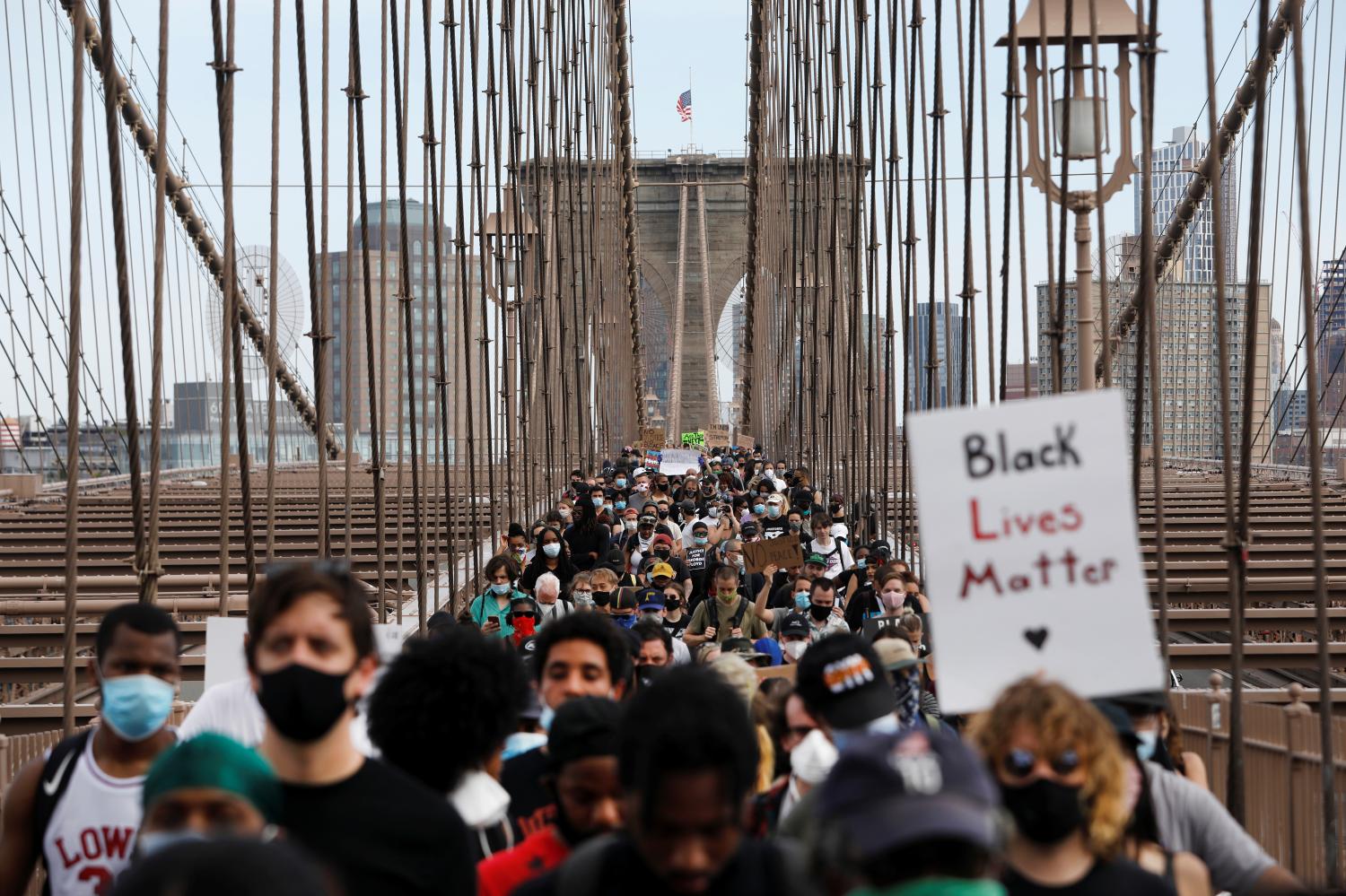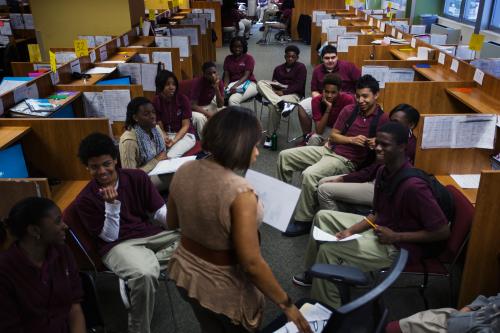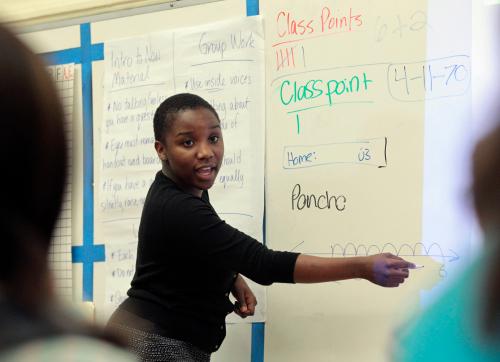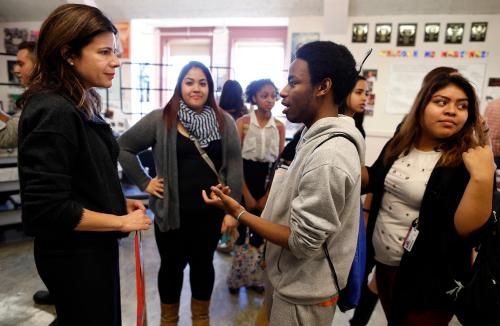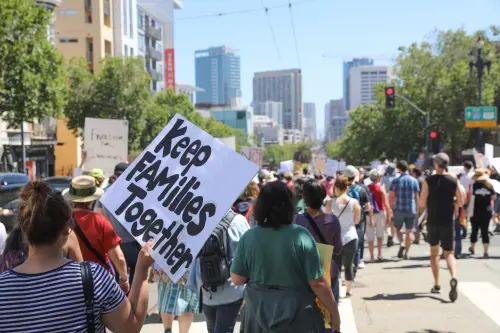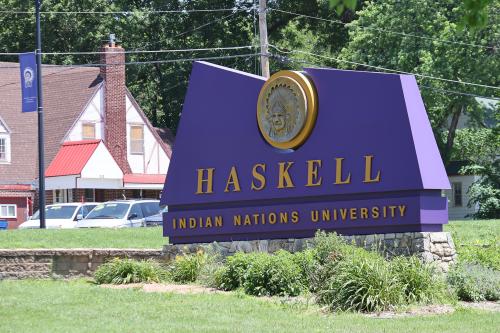A few years ago, I ran a study with a colleague, Daniel Newark, of how Americans think about test score gaps in education. It featured a survey experiment with a nationally representative sample of adults. The study design let us test for differences in how Americans see Black-white, Hispanic-white, and wealthy-poor gaps. The study’s main finding was that Americans are far more concerned about, and willing to address, wealth-based gaps than race- and ethnicity-based gaps.
The finding that has stuck with me the most, though, came from a question about how people explain the gaps that exist today. We asked, “How much of the difference in test scores between white students and Black students can be explained by discrimination against Blacks or injustices in society?” Nearly half (44%) of respondents chose “None.” Only 10% chose “A great deal.”
That 44% figure still feels stunning, and plainly wrong—especially in the aftermath of George Floyd’s killing. We are a country only a century-and-a-half removed from the enslavement of African Americans and its accompanying anti-literacy laws, which prohibited teaching slaves to read and write. The end of that era led not to some type of egalitarian or meritocratic society—or any sincere, sustained attempt to get there—but rather to the Jim Crow laws and de jure segregation of yesterday and the de facto segregation and structural racism of today. We are not a country in which current disparities just reflect how hard different groups of people are trying. Yet respondents to our survey were far more inclined to attribute gaps to perceived deficiencies in Black parenting and student motivation than to these profound inequities.
I don’t know exactly what attitudes and experiences led to those responses. Undoubtedly, many reflect individual prejudices and failures of empathy. But I also worry that the manifestations of structural racism have become such a fixed, omnipresent part of the educational landscape that it is hard for many of us to see them.
Some of those manifestations are not explicitly in education policy or practice, but they affect students nonetheless. There are exclusionary zoning policies that keep families that can’t afford single-family homes out of high-performing school districts; tax policies that prevent Black wealth accumulation (and corresponding spending on educational resources); and mass-incarceration practices that remove parents from children’s homes and strain those left behind.
Other manifestations are direct matters of education policy and practice. Some are subtle decisions that happen largely out of sight, day after day, like missed opportunities to assign students of color to advanced coursework and excessive discipline practices that send misguided messages. Others are there for us to see: funding levels that leave many high-poverty schools inadequately resourced; attendance boundaries that erect barriers to desirable schools; and test-based accountability measures that stack the deck against high-poverty schools by emphasizing student proficiency over growth.
If there’s a silver lining for education in the simultaneous crises of COVID-19 and police brutality, maybe it’s an increased public willingness—however fleeting—to take a closer look at our education systems and the countless inequities they inherit, reproduce, and create. Of course, not everyone will want to look. Some will, though, and perhaps they will see just how defining those inequities are and what we could do about them.
Part of the responsibility for clearer vision lies with the education community, which must speak clearly and honestly about the depth and causes of educational inequity. A growing chorus of scholars—including Gloria Ladson-Billings, Prudence Carter, and Kevin Welner—argues that we have done a poor job of conceptualizing and communicating about inequities. In particular, the term “achievement gap,” while useful in increasing public recognition of a problem, connotes a failure of low-scoring students (who do not or cannot “achieve”) rather than a societal failure in creating the opportunity gaps that produce those scores. An interesting new paper by David Quinn shows that an “achievement gap” framing can, though does not always, lead people to underestimate Black students’ performance—a topic that warrants further study.
Neither the COVID-19 outbreak nor the national outcry over police brutality is, at its core, an education story. But the issues surfaced by those crises are familiar. Education rarely has a lurid moment—what political scientists call a “focusing event”—that, while horrific, can draw attention to an issue and mobilize action. When we do, like the Parkland shooting, it seldom points directly at issues of race and inequality. Rather, moments of educational inequity happen quietly, day after day, in places like classrooms and school-board meeting rooms, often at the hands of people who mean no harm.
In many ways, it’s this banality that feels so dangerous. It’s that so much of the problem lies in plain sight and still can be so difficult for many of us to see. Hopefully the circumstances of the moment will help us see those problems, and their solutions, more clearly.
The Brookings Institution is committed to quality, independence, and impact.
We are supported by a diverse array of funders. In line with our values and policies, each Brookings publication represents the sole views of its author(s).

